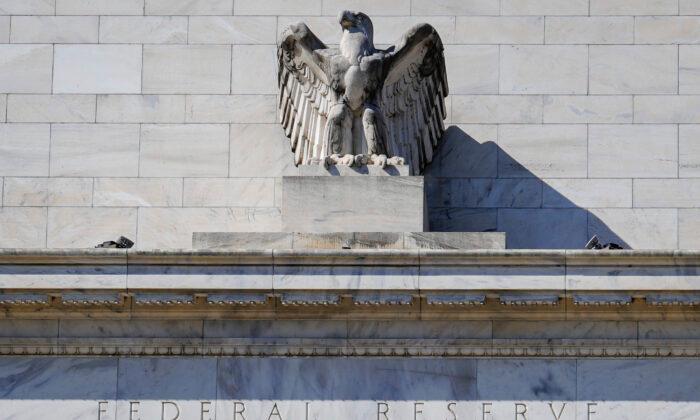U.S. banking regulators have unveiled a sweeping proposal for more stringent bank capital requirements, commonly known as the “Basel III endgame,” meant to bolster the banking sector against future crises.
The new rules modify the capital requirements applicable to banking organizations with total assets of $100 billion or more, as well as their subsidiary deposit-taking institutions.
The new framework could force the biggest U.S. lenders to set aside billions of dollars in total in order to bolster their ability to absorb losses when times turn tough.
Of that, the FDIC is required to recoup $15.8 billion of losses to its deposit insurance fund by a special assessment (basically a one-time fee) levied on other banks, which is a cost to banks that can be passed along to consumers.
The regulators said in the proposal that the tougher new capital requirements on banks will reduce potential costs to the FDIC’s deposit insurance fund in case of significant bank distress or failure.
Overall, the new rules would require banks to maintain an additional 2 percentage points in capital above current levels, with regulators expressing confidence that banks can handle the added burden.
Basel III Endgame
The Basel Committee on Banking Supervision is a panel convened by the Bank for International Settlements (BIS) in Basel, Switzerland. Its aim is to ensure regulators in various countries around the world apply similar minimum capital standards so that banks can survive loan losses during difficult times.The committee’s “Basel III” standard was agreed upon after the 2007–2009 global financial crisis. It includes numerous capital, leverage, and liquidity requirements. Regulators across the world have worked for years to implement many of those standards, and the so-called “endgame,” agreed upon in 2017, is the final iteration.
The “endgame” proposal refines Basel’s approach to setting capital based on the riskiness of banks’ activities. The U.S. proposal tackles several major components, including credit, market, and operational risks.
While the newly proposed framework has long been expected by banks, a number of them have expressed opposition.
“Today’s proposal would unnecessarily increase the amount of required capital for banks, with resulting harm for consumers and small businesses and a continued migration of financial activity into unregulated parts of the financial sector,” Bank Policy Institute (BPI) President and CEO Greg Baer said in a statement obtained by The Epoch Times.
BPI is a nonpartisan public policy, research, and advocacy group that represents America’s leading banks.
“The dramatic capital increases proposed today reflect a bad deal cut in Basel without public transparency or Congressional input, with an addition of unnecessary layers of capital solely for banks operating in the United States,” Mr. Baer continued.
“A proposal of this magnitude requires a robust and thorough economic analysis, which this one lacks,” he added.
Mr. Baer added that the new rules are good news for private equity, private debt, hedge funds, finance companies, and other unregulated firms that are exempt from the Basel requirements.
These beneficiaries “will continue to attract what used to be the business of banking, at higher costs to consumers and greater instability for markets.”
Regulators plan to give banks until the beginning of 2028 to comply with the new regulations.
A Federal Reserve spokesperson declined to comment on the substance of the BPI criticism but pointed to opening remarks made by Michael S. Barr, the Fed’s vice chair of supervision, at the public meeting in Washington.
“I want to emphasize that all comments will be carefully considered. We will be vigilant in working to avoid unintended consequences,” Mr. Barr said, adding that, “we want to ensure that the rule is supportive of resilient and liquid financial markets.”
“We are aware of concerns that the overall increase in capital requirements would be significant,” Mr. Barr continued, adding that the Fed is aware that there are both costs and benefits to the proposed rules.
“We have heard concerns that the proposal—when combined with our stress test requirements—might overestimate market and operational risk,” he said, adding that the Fed looks forward to comments on how specific activities may or may not be affected by the proposal.
Changes to Risk Modeling
Perhaps the biggest change under the new proposal is putting an end to banks’ ability to use their own internal risk models when determining how much capital should be held against lending activities, like mortgages or corporate loans.Instead, the proposal seeks to replace banks’ internal risk models with standardized approaches while replacing the current market risk and credit valuation adjustment risk requirements with revised approaches.
“The revisions set forth in the proposal would improve the calculation of risk-based capital requirements to better reflect the risks of these banking organizations’ exposures,” the regulators said in the proposal.
Other claimed benefits include reducing the overall complexity of the regulatory framework while making requirements more consistent across banks. It is also expected that supervisory and market assessments of banks’ capital adequacy will be made easier.
“Application of the expanded risk-based approach to large banking organizations would provide granular, generally standardized requirements that result in robust risk capture and appropriate risk sensitivity,” the regulators wrote in the proposal.
Banks and other depository institutions with assets over $100 billion will, on average, see a 9 percent increase in risk-weighted assets, per the proposal.
Under the new proposal, capital requirements will, on average, rise by an additional 2 percentage points in capital above current levels, with bigger institutions subject to more stringent requirements.
Significant Trading Activity
Banking organizations with significant trading activities are subject to substantial market risk and so are subject to additional market risk capital requirements.Accordingly, under the new proposal, the dollar-based threshold for applying market risk capital requirements for such organizations would be boosted from $1 billion to $5 billion of trading assets plus trading liabilities.
The proposed rule also revises the way that these dollar-based thresholds are calculated, doing away with “point-in-time” amounts and replacing them with amounts based on four-quarter averages of trading assets and trading liabilities.
At the same time, banking organizations whose trading assets plus trading liabilities represent 10 percent or more of their total assets will continue to be subject to market risk requirements.
Banks that no longer meet the minimum thresholds for being subjected to market risk capital requirements would, under the proposal, calculate risk-weighted assets for trading exposures using a standardized approach.
Large banking organizations (with total assets of $100 billion or more) will be subject to market risk capital requirements regardless of their trading activities, per the proposal.
According to the results of the Fed’s June 28 stress tests, the largest U.S. banks are well-capitalized and could endure massive economic and financial market shocks.
The annual stress testing of the banks shows that large institutions could handle a deep recession, an enormous drop in commercial and residential real estate prices, and a 10 percent unemployment rate.





